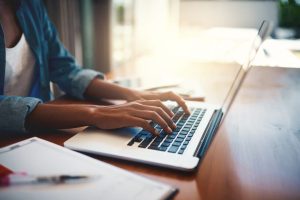Why BSD Makes a Great Platform for Reliable Databases
BSD systems have built a strong reputation for stability and performance. For database hosting, these traits matter a lot. Whether it’s a blog, a company dashboard, or a custom web app, setting up a MySQL or PostgreSQL database on BSD provides a well-tuned server environment that can support database operations with dependable uptime.
Both MySQL and PostgreSQL are widely supported on BSD. They run smoothly, are easy to manage with the right tools, and come with plenty of documentation. Setting up a MySQL or PostgreSQL database on BSD is also enhanced by the system’s strong process control and security features, which help keep data safe and services running properly.
Choosing BSD doesn’t mean giving up on usability either. With the package manager and a few configuration steps, setting up either MySQL or PostgreSQL becomes a straightforward task, even for those just learning server administration.
Installing MySQL Using the BSD Package System
Setting up a MySQL or PostgreSQL database on BSD begins with using the system’s built-in package manager. FreeBSD users can run the command pkg install mysql80-server to get the latest version. After the installation, add the service to /etc/rc.conf and start it by running service mysql-server start.
Once you launch the server, it generates a temporary password for the root user. Log in using mysql -u root -p, change the root password, and set up user privileges. After that, you can create new databases and tables by running standard SQL commands.
A typical first step involves creating a dedicated database for a website or application and assigning a limited user account. This approach separates duties and keeps access tightly controlled. With MySQL running properly, you can now connect it to web servers or applications without delay.
Installing PostgreSQL with a Few Simple Commands
Setting up a MySQL or PostgreSQL database on BSD is straightforward thanks to the platform’s package management system. PostgreSQL is another popular choice and works just as smoothly on BSD. Installing it with pkg install postgresql15-server adds both the database engine and common tools. Once installed, it can be initialized using service postgresql initdb, then enabled and started.
PostgreSQL uses its own user account, usually named postgres. To begin working with the database, switch to that user with su – postgres and launch the PostgreSQL shell using psql. This command line tool allows full control over the database system.
Creating a database and assigning a user in PostgreSQL feels familiar to many who’ve used other systems. Its syntax is clean, and once the basics are in place, developers can start building tables and importing data without delay.
Choosing Between MySQL and PostgreSQL Based on Project Needs
MySQL and PostgreSQL both deliver powerful database solutions, but each excels in different areas. MySQL offers impressive speed and enjoys wide adoption, especially in web hosting. Many developers pair it with WordPress, Joomla, and other PHP-based applications.
PostgreSQL stands out for its advanced features. It handles complex data types, uses powerful indexing, and follows strict standards compliance. Developers who need precise control over transactions or rely on custom functions often achieve better results with PostgreSQL.
Choose MySQL for simple use cases or content management systems because it allows fast setup and benefits from broad community support. On the other hand, pick PostgreSQL for data-heavy systems with analytical or complex requirements since it provides greater flexibility over time.
Managing Users and Permissions with Care
Database security begins with properly setting up users and permissions. Both MySQL and PostgreSQL offer detailed access controls to protect data effectively. MySQL manages user privileges through GRANT and REVOKE commands, allowing administrators to define exactly what each user can do. For example, you can create a read-only user who queries data without modifying it.
PostgreSQL manages roles in a similar way. Administrators create login roles, assign database ownership, and control which commands each user can execute. You can also fine-tune each connection to match specific access patterns, improving overall security.
Always create a separate user for each application or service to isolate access and safeguard data. This approach ensures that if one part of the system gets compromised, the database stays secure, and only the necessary permissions face any impact.
Configuring Network Access for Remote Connections
By default, both MySQL and PostgreSQL bind only to the local machine. To allow remote connections, you need to edit their configuration files. In MySQL, update the my.cnf file and change the bind-address setting. In PostgreSQL, adjust both postgresql.conf and pg_hba.conf to accept external connections.
After enabling remote access, configure the firewall to permit connections on the correct ports—3306 for MySQL and 5432 for PostgreSQL. On BSD systems, use firewall tools like pf or ipfw to restrict access to specific IP addresses for added security.
This configuration lets users or applications on other servers connect to the database securely. Additionally, enabling SSL support and using strong passwords further protects the connection, reducing the risk of interception or misuse.
Keeping Services Running with rc Scripts
One of the advantages of BSD is its service control system. Adding entries like mysql_enable=”YES” or postgresql_enable=”YES” to /etc/rc.conf ensures the database starts automatically when the system boots.
This is useful for servers that need to stay available at all times. If the machine restarts after maintenance or an outage, the database comes back online without any manual steps. Administrators can use service commands to start, stop, or restart the database as needed.
These tools simplify routine maintenance. When it’s time to update, restart, or test the database, everything is just a short command away, and the service manager keeps the system clean and predictable.
Backing Up Data to Prevent Loss
A good backup routine protects against mistakes, corruption, or hardware failure. MySQL offers mysqldump, which exports databases to a text file. PostgreSQL provides pg_dump for the same purpose. Both tools create portable backups that can be restored quickly.
Backups can be automated using crontab. A simple script runs once a day, storing the database snapshot in a secure folder or sending it to another server. These files are easy to compress and archive for long-term storage.
Testing backups regularly ensures they’re working properly. It’s better to spend a few minutes confirming that a restore works than to find out too late that something’s missing when it’s urgently needed.
Using Tools to Monitor Performance
Database performance matters, especially as more data gets added or as user traffic grows. Both MySQL and PostgreSQL have built-in commands to check activity. MySQL’s SHOW STATUS and PostgreSQL’s pg_stat_activity give insight into what queries are running and how the system is handling them.
FreeBSD users can also use top, iostat, or zfs list to check system health. These tools reveal memory use, disk activity, and CPU load. Combined with logs from the database system, they help spot slow queries or connection issues.
Tuning configuration files based on this feedback makes a big difference. A small change to a cache size or buffer setting can reduce query times and improve responsiveness.
Moving Toward a Production-Ready Database
Once the database is working and tested, a few extra steps make it more reliable. Setting up regular updates keeps security issues under control. Enabling SSL protects data in transit. Using a dedicated user account in the operating system adds another layer of safety.
Setting Up a MySQL or PostgreSQL Database on BSD is only the beginning—documenting which ports are used, where backups are stored, and which scripts manage the service ensures others (or future you) can easily understand and maintain the system.
With these steps in place, the BSD system becomes more than just a server. It’s the heart of a stable, secure data environment that supports websites, tools, and teams with confidence.










No Responses